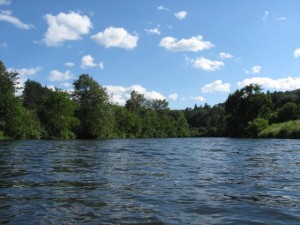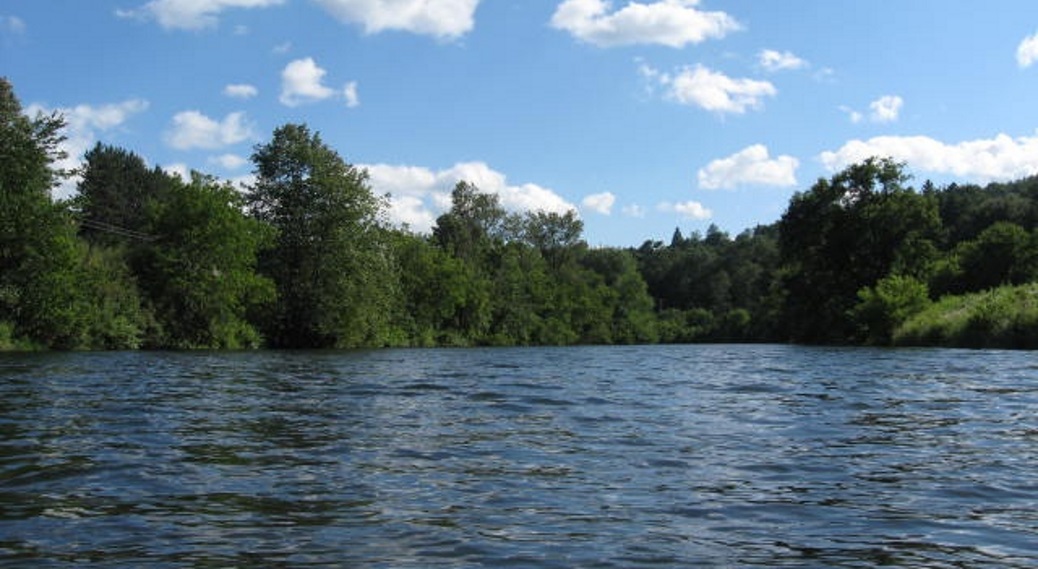Water Closet for August 15, 2014
IT ALL FLOWS DOWNHILL
By Arthur McKee1
In May of this year, I spent about a week in my home state of Vermont visiting family and old friends. The harsh winter had dragged on into a cold spring with late snowmelt and delayed leaf out. The days had become warm and sunny, but the streams I’d hoped to fish were running high and the fishing was simply not good so I drove around to favorite brooks and rivers and reminisced about those that got away and those that hadn’t.
The streams and rivers of today are so much cleaner than they were in the 50s, and those of northeastern Vermont are good examples. In my hometown of St. Johnsbury, the pollution was so bad that you didn’t fish for trout in the reaches of the Passumpsic, Moose, or Sleepers Rivers that went through town. Despite their being swiftly flowing streams, the oxygen levels were so low that few fish could survive at all, and the stench could gag you – or be sickeningly sweet. The Cary Maple Sugar Candy Factory was on the right bank of the Moose River as it entered town, and a fun thing to do as a kid was to sit on the opposite bank of the river and wait for the periodic flush of maple sugar-laden wastes to pour into the river. Several hundred gallons would spew from a large pipe and drop into an eddy creating a spinning heap of fragrant foam a few feet high that would launch downstream and break up in the rapids, while filling the air with the sweet fragrance of maple sugar. It was quite a sight.
The other factories in town dumped their wastes directly into the rivers or into the untreated municipal sewage that created a dead zone downriver for several miles. A friend and I once made the mistake of canoeing the reach where the Passumpsic River joined the Connecticut. We traversed the long and slowly moving septic tank as quickly as possible.

Passumpsic River, tributary of the mighty Connecticut River which it joins in St Johnsbury, Vermont.. A half century ago these and other New England Rivers were filthy with human, industrial,and agricultural wastes; now they are clean, yet not as protected and free flowing as they should and could be. .
Lynda Rosengren photo
Even into the late 60s, our nation’s rivers were a mess, some notoriously so such as the Cuyahoga River in Ohio that would catch fire, and large but shallow Lake Erie being rimmed with deep piles of wave-borne algae rotting along the shoreline. The Clean Water act of 1972 was hugely important, providing funds for wastewater treatment, upgrading laws and codes that put an end to much of the pollution.2 Although Lake Erie, a success story of the 70/80s, is today experiencing algal blooms that are as bad, perhaps now worse than the late 60s/early 70s because of non-point-source agricultural runoff (fertilizers and feed lot wastes) that is heavily laden with phosphorous. Non-point-source pollution is not dealt with very well under the Clean Water Act, is left largely to the states to regulate and enforce, and presents water quality problems in lakes and streams in agricultural landscapes where fertilizer is heavily applied. A big topic for another column.
The rivers through St. Johnsbury now support brown, rainbow and brook trout, although they are not great fishing because the aquatic habitat remains largely shallow riffles with few pools to hold large fish. You no longer have to go to the headwater streams, well above any point sources of raw sewage, to find trout. And the small streams are now more protected from cattle; access is more limited, runoff less problematic. In the western US, streams on public lands are increasingly protected from cattle and are developing vigorous stands of willows, aspens, and cottonwoods along them, protecting banks and shading the streams. In terms of water quality, we’ve come a long way, with the notable exceptions of situations like Lake Erie.
1. Arthur McKee is Director Emeritus H. J. Andrews Experimental Station in the Oregon Cascades. His specialty is forest ecology. McKee provided the Water Closet with four well received essays in the past year. This, his latest submission, has been divided into two parts. The second part on roads and the environment will be published in the Water Closet next week. (Stream Team note.)
2. President Richard Nixon polluted the Oval Office with words. Some led to his demise. He also famously signed the Clean Air Act and Clean Water Act into law. (Stream Team note.)
__________________________________________________________________
WATER RESOURCE AND CONSERVATION INFORMATION
FOR MIDDLETON, BOXFORD AND TOPSFIELD
| Precipitation Data* for Month of: | May | June | July | Aug | |
| 30 Year Normal (1981 – 2010) – Inches | 4.06 | 3.95 | 3.89 | 3.37 | |
| 2014 Cent. Watershed Actual – Inches | 2.77 | 2.03 | 7.26 | 0.2 as of 8/12** | |
Ipswich R. Flow Rate(S. Middleton USGS Gage) in Cubic Feet/Second (CFS)
For Aug. 12, 2014 Normal . . . 7.4 CFS Current Rate . . . 5.1 CFS
*Danvers Water Filtration Plant, Lake Street, Middleton is the source for actual precipitation data thru July. Normal precipitationdata is from the National Climatic Data Center.
**August precipitation data is from the MST gage.
THE WATER CLOSET is provided by the Middleton Stream Team: www.middletonstreamteam.org or <MSTMiddletonMA@gmail.com> or (978) 777-4584

